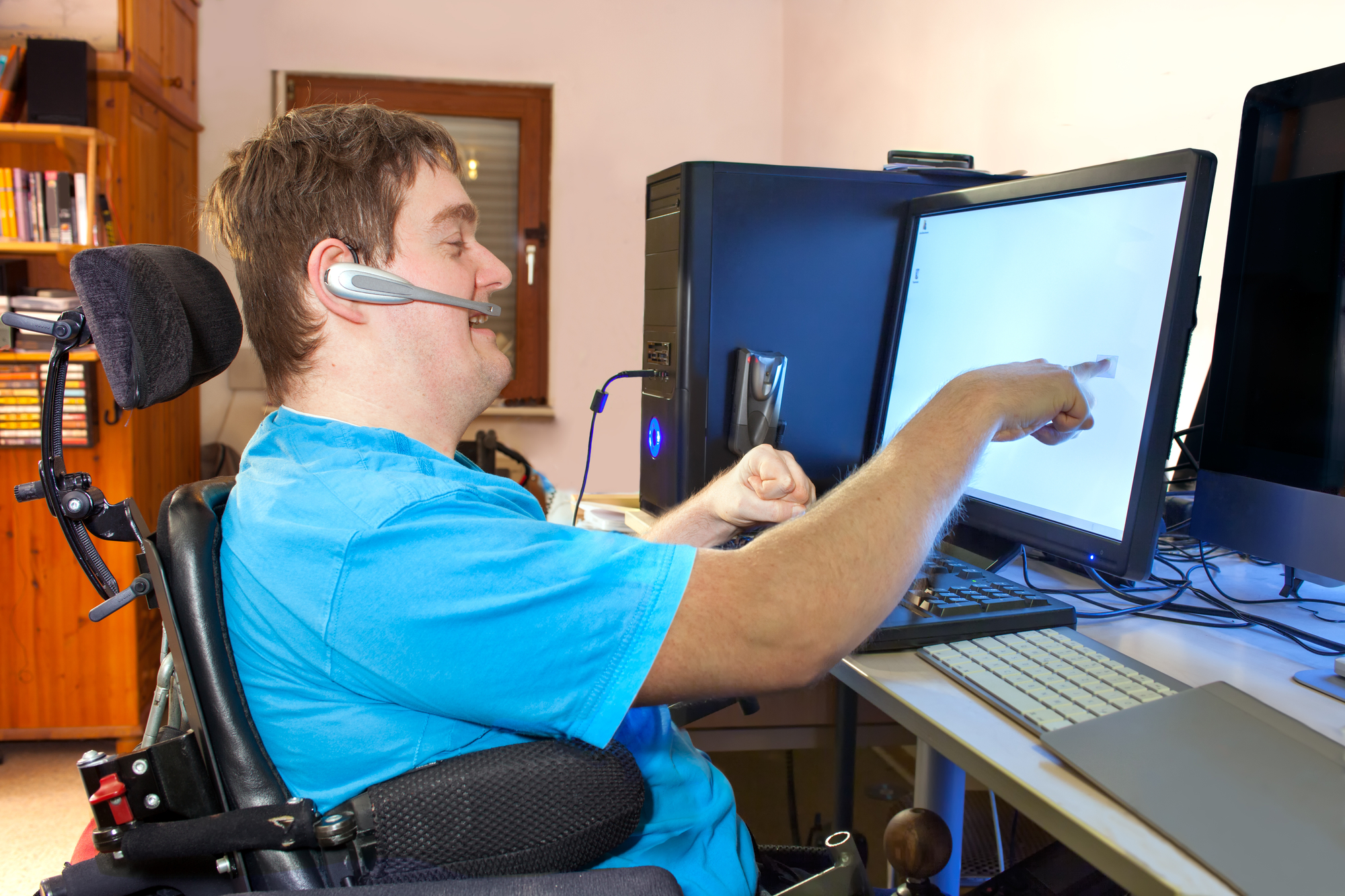Cerebral palsy hasn’t always been understood or accepted. To discover the story of CP throughout history, read on…
In our modern world, disabilities, like cerebral palsy, are understood and accepted as part of everyday life. But, this hasn’t always been the case…
Through the centuries, disabilities have baffled and confused people, and many people with CP, and other conditions, would likely have suffered greatly. That said, ancient and medieval evidence shows that cerebral palsy was, indeed, prevalent, if misunderstood.
Thanks to the work of 19th century scientists, we now have a much greater understanding of the causes of CP. So, the question of how to make a cerebral palsy claim is much clearer; we now know the causes at birth that may be blamed, and each person is able to get an individual disability insurance quote. To discover more about the history of cerebral palsy, and the research that got us to where we are today, read on…

What is Cerebral Palsy?
Cerebral palsy in babies is a condition caused by lack of oxygen either before, during, or after birth. It causes a weakness in muscles, meaning that physical movement and speech can sometimes prove difficult.
Types of cerebral palsy range from mild cerebral palsy, which is hardly, all the way to more severe cases. These severer instances can really exacerbate the cerebral palsy symptoms, causing difficulties in movement and speech that may greatly affect the individual’s life. That said, thanks to the past research, and ongoing funding, people with CP are now able to manage their symptoms to live a happy and fulfilled life.
The First Evidence for Cerebral Palsy
Attitudes to disabilities, and understanding surrounding mental and physical differences, were not always very pleasant. That doesn’t mean that people thousands of years ago didn’t suffer from disabilities. In fact, some of the first descriptions of what we think might have been cerebral palsy date make to the ancients!
Epitaph Evidence on a Gravestone
One of the first evidential portrays of cerebral palsy has been noted during the 15th to 14th century BCE. A gravestone from this date depicts a figure with a crutch, and one leg smaller than the other. This seems to demonstrate the understanding of CP that we have today, although we can’t be sure.
Physical Evidence in an Ancient Egyptian Pharaoh
The first physical evidence of CP, around 1196 to 1190 BC, is the Egyptian Pharaoh, Siptah. Pharaohs were often known to suffer from physical and mental afflictions due to the idea that their bloodline would be kept pure through incest. This meant that many pharaohs were born from intercourse between family members, causing life-threatening repercussions for the children.
Siptah, in particular, is thought to have had cerebral palsy due to a medical examination of his mummified body, showing a deformed foot and hands. Although we can’t be 100 percent certain about this, ancient descriptions of his condition seem to match with our modern understanding of the disability. It’s pretty cool to learn that, even during a time when disabilities were seen as socially unacceptable, prominent individuals still emerged with them.
Literary Evidence in Ancient Greek Times
Evidence doesn’t stop there though, as literary descriptions of what we think might have been cerebral palsy have also emerged. Grecian texts from the age of the Father of Medicine, Hippocrates, describe symptoms of paralysis and paresis. What’s more, the medical text, On the Sacred Disease, seems to have described a lot of the same symptoms as CP too.
To add to this, historical records seem to show that the Roman Emperor Claudius (10 BCE–54 CE) may have also had cerebral palsy! His physical problems discussed in historical texts, such as Suetonius’ Lives of the Caesars, could show he was another leader with this disability.
Evidence in Early Modern Art
Finally, hundreds of years later, medical historians think they may be seeing cases of CP in 16th to 17th century art. Images, such as Jusepe de Ribera’s The Clubfoot in 1642 shows symptoms similar to that of cerebral palsy. It seems the condition is much more prevalent in history than we may have been led to believe.

When was Cerebral Palsy First Recognised?
Although it’s clear to see that cerebral palsy has been around since the dawn of time, it wasn’t until the 1800s when it was truly recognised as a medical condition. William Little, an English surgeon who died in 1894, battled long and hard with illnesses and subsequent disabilities. This inspired him to pursue a project which aimed at helping children who suffered from the social and physical difficulties that came with disabilities at this time.
Little began giving lectures on cerebral palsy, or “Little’s Disease” as it was known then, which demonstrated how birth injuries impacted children. In these lectures and works, he made a link between a loss of oxygen to the brain during birth, causing brain damage and CP.
In 1861, Little presented his findings to the Obstetrical Society of London, defining cerebral palsy as a condition caused by an injured nervous system, leading to spasticity. This led to a more modern exploration of the disability, which has helped us to understand its origins and causes.
During the 1880s, William Gowers, a British neurologist, continued these ideologies, making a link between difficult births and new-borns with paralysis. He defined this as “birth palsy”, and classified two types: peripheral and cerebral.
At a similar time, William Osler, a Canadian physician, reviewed a number of CP cases, further helping to classify the disorder. He observed that bleeding inside the brain and infection were likely a cause factor.
Sir Osler later coined the term “cerebral palsy” when he wrote his book Cerebral Palsies of Children. The book summarised his findings, and even provided some treatments and therapies to help the management of the disorder.
Sigmund Freud Getting Involved…
Sigmund Freud, the well-known psychologist, also got involved in the classification and definition of the disorder. Freud went even further than the previous men, splitting the disability up into a number of causes, including:
- Problems present at birth;
- Problems developing during birth;
- Problems emerging after birth.
Before this, there had been almost no research into how CP can emerge inside the womb. Instead, it was previously only regarded to be caused by difficult births, and nothing else. As you can see, Freud highlighted the array of causes spanning much wider than this.
Freud realised this as he noticed that some babies who were deprived of oxygen at birth did not emerge with cerebral palsy. Ultimately, physicians at the time paid little attention to Freud’s findings. It wasn’t until much later, when it was discovered that only 10 percent of cases occurred due to oxygen deprivation, that Freud was listened to.

Initial Treatments of CP
Although cerebral palsy was defined during the 1800s, it wasn’t until the start of the 20th century that treatments started to be researched. Winthrop Phelps saw CP as a musculoskeletal disorder, rather than something neurological. So, he developed some techniques to surgically address the muscle weakness.
Alternatively, a Hungarian physical rehabilitation practitioner, named András Pető, decided to go for the therapeutic approach. Rather than invasive surgery, he worked on physical therapy to help children with CP to walk and move easier. His methods, although a little evolved now, are still widely used today.
Later Researchers and Innovators in CP
Although many people predominantly focus on Little’s and Freud’s contributions to CP research, there were a number of others who deserve credit. These include:
- Leonard and Isabelle Goldenson: their first daughter has cerebral palsy, and they worked really hard to raise awareness for the condition. After she died due to complications with her CP, they set up the United Cerebral Palsy Association in 1950, which is still a huge organisation in the US.
- Marie Killilea: she was an activist who wrote two best-selling books surrounding her daughter, Karen, who also had CP. She later founded The National Cerebral Palsy Foundation.
- Robert Palisano et al: they looked into classifying cerebral palsy even further, introducing the Gross Motor Function Classification System (GMFCS). This provided stricter grades of limitations based on a number of criteria, including the person’s basic movement abilities, and their dependency on crutches and chairs.
Modern Medicine and Cerebral Palsy
Although there is a great understanding of the causes and effects of cerebral palsy now, the same can’t be said for people one hundred years ago. Unfortunately, back then, disabilities were seen as the devil’s work. This meant that religious persecution, being sent to a mental asylum, imprisonment, or even death, were common results.
That said, with the work of the people above, attitudes have completely altered, and this has led to further breakthroughs in cerebral palsy treatment options. Although CP can’t be “cured”, the symptoms of this disability can now be managed. This means that children born with cerebral palsy can live very normal lives, through the use of:
- Braces
- Robotic legs
- Physical therapy
- Occupational therapy
- Speech and language therapy
- Medications
- Crutches
- Wheelchairs

A Bright Future for Disabilities…
As you can see, cerebral palsy has a very rich and interesting history. Not only was it depicted in numerous ancient works, it also trickled down into medical research many hundreds of years later. Thanks to the work of the many scientists, doctors, and philanthropists during the 19th and 20th century, CP is now recognised and understood.
Do you have any experience with cerebral palsy, or any more interesting facts to add here? We’d love to hear your thoughts and stories down in the comments below! Maybe we’ll learn even more interesting factoids about CP along the way…
this is a collaborative post

